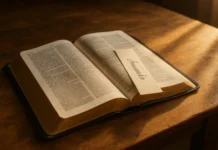 When exploring the Bible, a common question arises: “How many Peters are in the Bible?” This question leads us to delve into the identity of Peter, a key figure in the New Testament, and to understand his significance in the early Christian church. In this article, we will uncover the identities of the Peters mentioned in the Bible, clarify their roles, and provide a comprehensive guide on reading the Bible effectively.
When exploring the Bible, a common question arises: “How many Peters are in the Bible?” This question leads us to delve into the identity of Peter, a key figure in the New Testament, and to understand his significance in the early Christian church. In this article, we will uncover the identities of the Peters mentioned in the Bible, clarify their roles, and provide a comprehensive guide on reading the Bible effectively.
Who Are the Peters in the Bible?
In the New Testament, the name Peter is most prominently associated with Simon Peter, one of Jesus’ twelve apostles. However, understanding whether there are other individuals named Peter is crucial for a comprehensive study.
Is Simon Peter the Same as Peter?
Yes, Simon Peter is the same as Peter. Simon was his given name, and Peter (Petros in Greek, meaning “rock”) was the name given to him by Jesus. This name change is significant, symbolizing Peter’s foundational role in the early church.
Are There Two Peters in the Bible?
While the name Peter is primarily associated with Simon Peter, there is no substantial evidence in the New Testament suggesting the existence of another individual named Peter. Simon Peter is the central figure referred to simply as Peter throughout the Gospels and Acts.
How Many Books of Peter Are There in the Bible?
There are two epistles in the New Testament attributed to Peter:
- 1 Peter
- 2 Peter
These letters, written to early Christian communities, provide guidance, encouragement, and teachings on maintaining faith amidst trials.
Story of Peter in the Bible Summary
Early Life and Call to Discipleship
Simon Peter was a fisherman by trade, living in Capernaum. He was called by Jesus to become a “fisher of men” (Matthew 4:18-20). This moment marked the beginning of his journey as a disciple.
Key Events and Contributions
- Confession of Faith: Peter famously confessed Jesus as the Christ, the Son of the living God (Matthew 16:16).
- Walking on Water: Peter briefly walked on water towards Jesus but began to sink due to doubt (Matthew 14:28-31).
- Denial and Restoration: Despite his strong faith, Peter denied knowing Jesus three times during His trial (Luke 22:54-62). After Jesus’ resurrection, Peter was restored and commissioned to “feed my sheep” (John 21:15-17).
Role in the Early Church
Peter played a pivotal role in the early church. He delivered the first sermon at Pentecost, leading to the conversion of 3,000 people (Acts 2:14-41). He also performed miracles, such as healing a lame man (Acts 3:1-10).
Another Name of Peter in the Bible
Peter is also referred to as Cephas, an Aramaic name meaning “rock” (John 1:42). This name further emphasizes his role as a foundational leader in the church.
Facts About Peter in the Bible
- First to Declare Jesus as the Messiah: Peter recognized Jesus’ divine identity early on (Matthew 16:16).
- Witness to Major Events: He witnessed the Transfiguration of Jesus (Matthew 17:1-9).
- Martyrdom: Tradition holds that Peter was crucified upside down in Rome, feeling unworthy to die in the same manner as Jesus.
What Order Should I Read the Bible In?
Reading the Bible can be a rewarding journey, but knowing where to start can be challenging. Here are some approaches:
Chronological Order
Reading the Bible in chronological order helps understand the historical timeline. This approach begins with Genesis and follows the sequence of events as they occurred.
Traditional Order
The traditional order follows the arrangement of books as found in most Bibles, starting with Genesis and ending with Revelation. This method provides a structured approach, aligning with the canon.
Thematic Approach
For those interested in specific themes, such as prophecy, wisdom, or the life of Jesus, a thematic approach is beneficial. This method involves selecting books or passages that focus on particular topics.
New Testament First
Starting with the New Testament, particularly the Gospels, can be more accessible for new readers. It provides insight into Jesus’ life and teachings, which are central to Christianity.
Daily Reading Plans
Many find daily reading plans helpful, offering structured passages to read each day. These plans can range from one-year to two-year commitments, ensuring consistent and comprehensive reading.
Conclusion
Understanding how many Peters are in the Bible helps clarify the role of Simon Peter, a cornerstone of early Christianity. By exploring his life, contributions, and writings, we gain a deeper appreciation for his impact. Additionally, choosing an effective Bible reading plan can enrich your spiritual journey, offering insights and guidance tailored to your needs.











